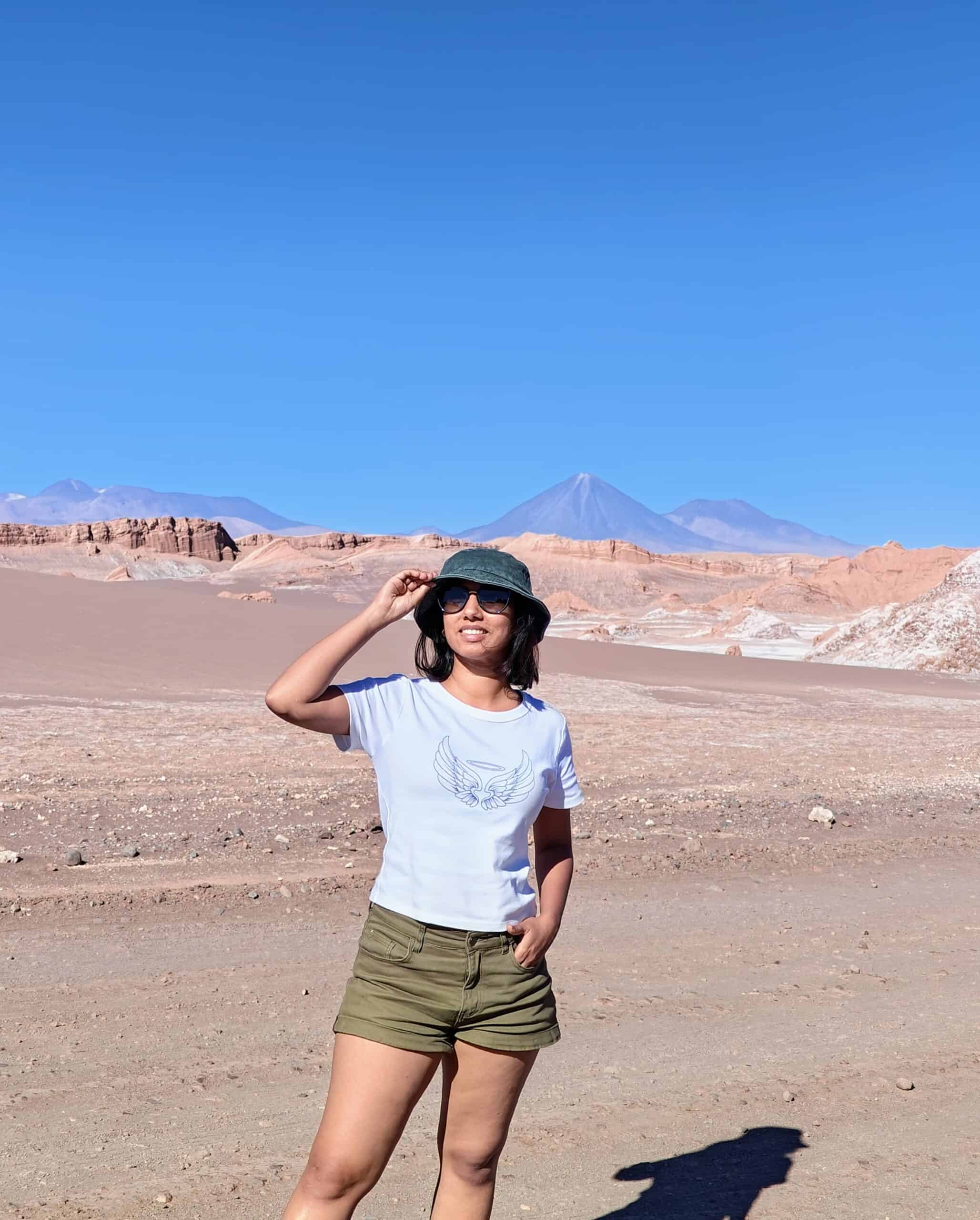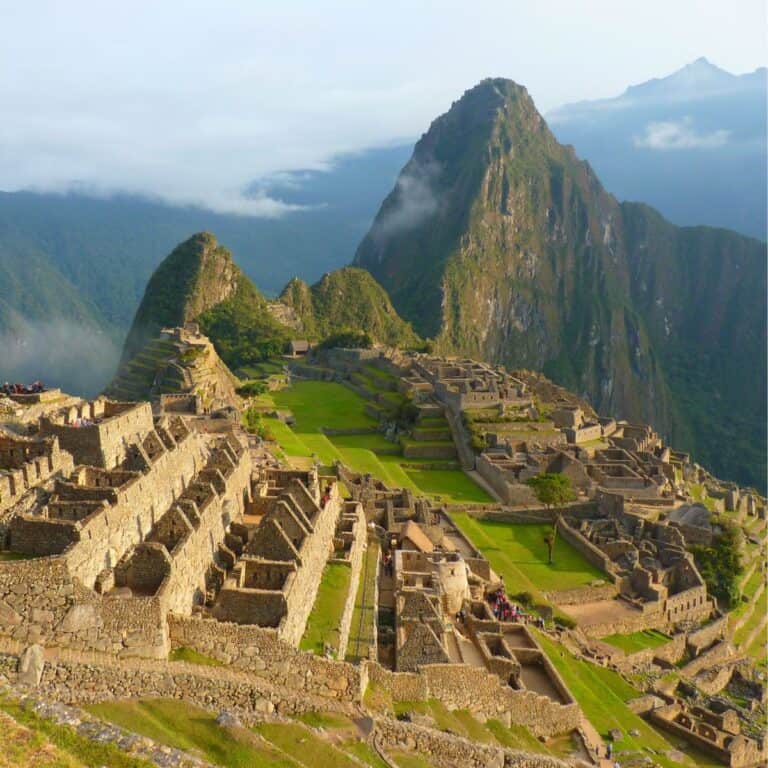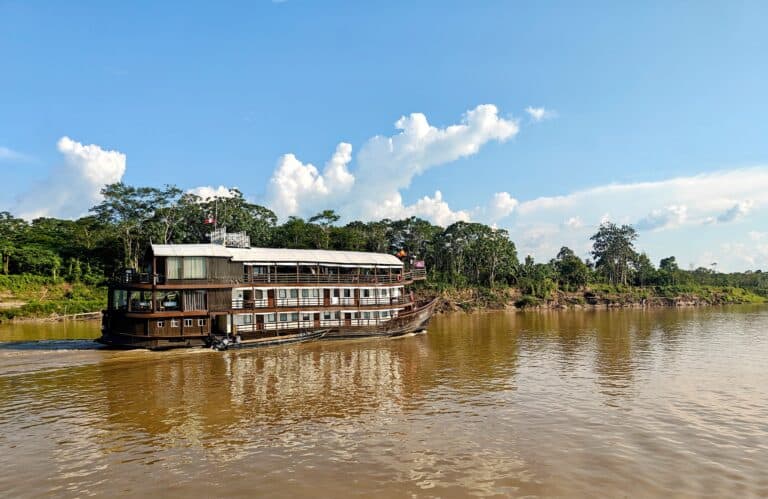Top Things to Do in Atacama Desert, Chile: Our 4-Day Adventure Off the Grid
During our 4-month remote work journey across South America, we covered a lot of ground from the lush Amazon to the towering Andes. But if there’s one place that truly made us pause and feel like we’d landed on another planet, it was the Atacama Desert in northern Chile. If you’re looking to float in salt lagoons, walk across Mars-like valleys, and spot constellations you’ve never seen before, you’re in for something special.
This guide is for anyone planning a trip to the Atacama Desert, whether you’re a nature lover, stargazing nerd, photographer, or simply someone looking to disconnect in one of the most otherworldly landscapes on Earth. We’ll walk you through the top things to do in the Atacama Desert, where to stay, what to eat and practical tips to make your experience smoother.
We spent four surreal days based in San Pedro de Atacama, living slow, waking up before sunrise for geysers and ending days under skies blanketed in stars. It was easily one of our best off-the-grid vacations to date. Expect honest insights from our personal experience, not a cookie-cutter list. We’re slow travelers who work remotely as we explore, and the Atacama was surprisingly accommodating even for a couple of laptop-toting wanderers.
Looking for more wild, off-the-grid adventures? Don’t miss our blog on the Amazon river cruise cruising deep into the Peruvian jungle from caiman-spotting night rides to piranha fishing.
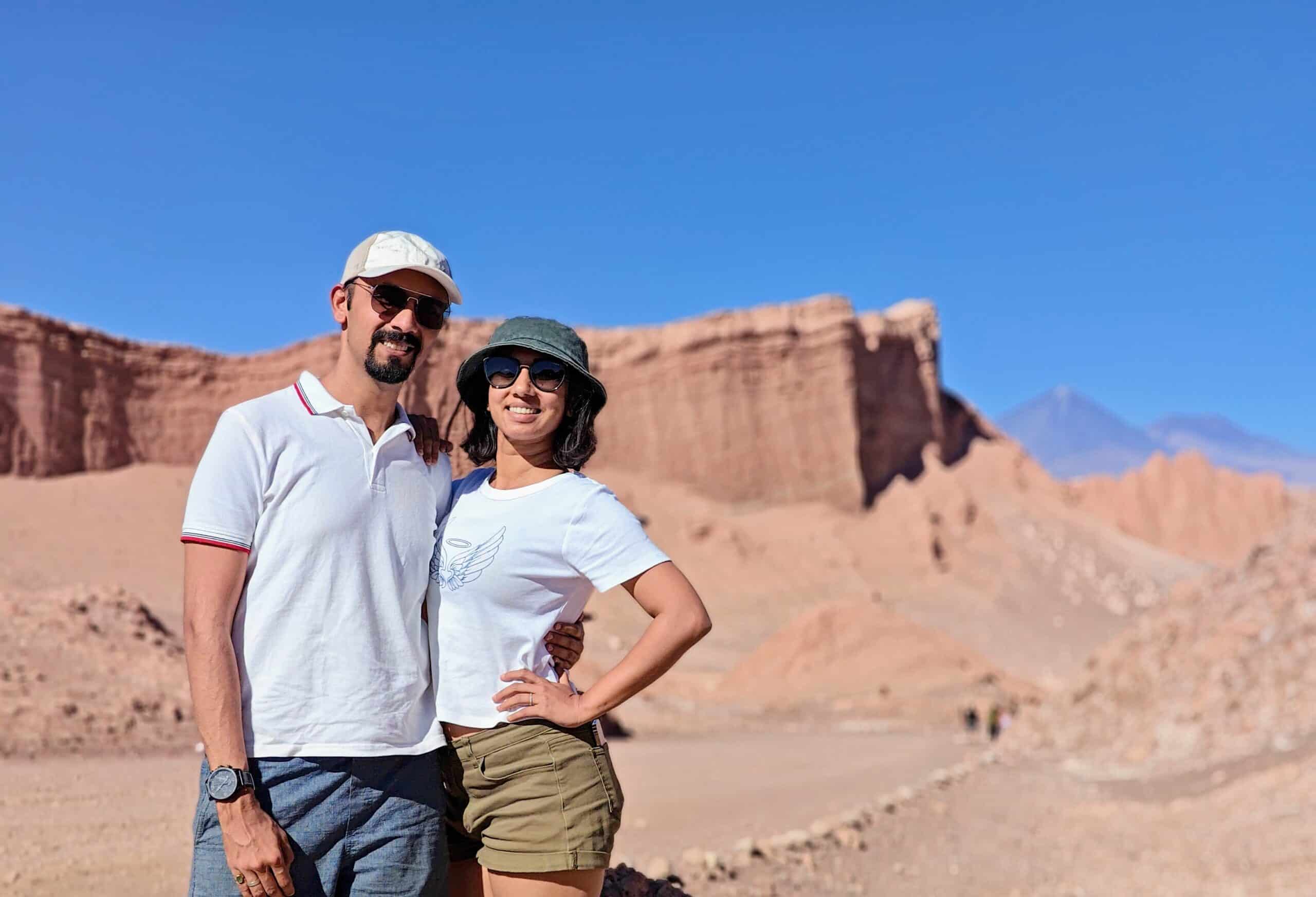
If you want to travel while working, just like us, check out our blog on how to travel with your 9-to-5 job.
Let’s dive into the best things to do in the Atacama Desert and how to plan a trip that’s magical, meaningful and just the right amount of weird.
How to get to the Atacama Desert?
While the Atacama Desert may feel like the middle of nowhere (in the best possible way), getting there is surprisingly straightforward. If you’re planning your trip from abroad like we did, your first big hop will be to Santiago (Chile’s capital) but the real journey begins after that.
Fly to Calama Airport
The easiest way to access the Atacama is by flying into Calama (CJC Airport) which is the closest city with a commercial airport and it acts as the main gateway to the desert. We booked an early morning flight from Santiago so we could land in Calama by 10 AM and still have the whole afternoon to settle into San Pedro.
- Flight Duration: ~2 hours
- Cost: Budget flights can be as low as $30–50 USD if booked early.
Pro Tip: choose a window seat on the right, the Andes views are unreal on descent.
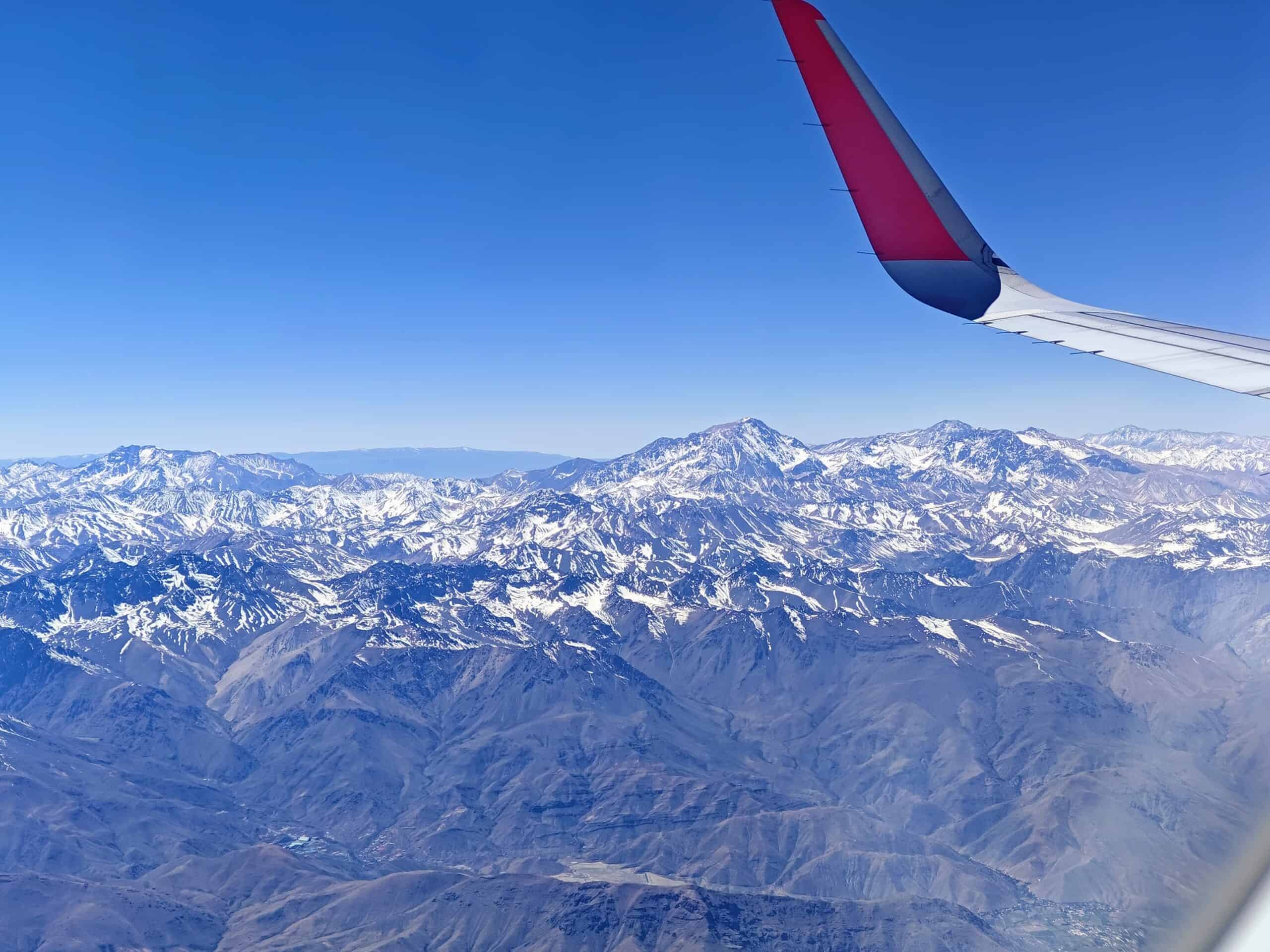
Next, take a shuttle to San Pedro de Atacama
Once you land in Calama, you’re still 100 km (~62 miles) away from San Pedro de Atacama, the charming desert town where you’ll be based. Thankfully, shared shuttle vans operate between the airport and San Pedro multiple times a day. The drive itself is part of the adventure – you’ll pass barren stretches of desert, jagged hills, and the occasional llama herd. For us, it was the perfect intro to the otherworldly landscapes that awaited.
- Travel time: ~1.5 hours
- Cost: ~$15 USD one way (about 10,000–12,000 CLP)
Pro Tip: Book roundtrip online with companies like TransVip or Transfer Pampa. They’ll confirm your pickup time for your return flight.
Should you rent a car in the Atacama Desert?
We debated this one a lot and ultimately chose guided tours and we’re glad we did. If you’re on a tight schedule or simply want to relax, tour providers like Denomades handle everything: pick-ups, entrance fees, guides, and timing around golden hours.
If you prefer flexibility and don’t mind navigating bumpy desert roads, renting a car could be a great option especially for photographers or slow travelers. That said, we chose guided tours for the ease of having everything handled, from logistics to timing. Tours are stress-free and come with knowledgeable local guides, but they can feel a bit rushed. Self-driving gives you full control, but you’ll need to be comfortable with rough terrain, limited phone signal, and some very early starts.
San Pedro de Atacama: Desert Life Meets Laid-Back Vibes
Once you arrive in San Pedro de Atacama, everything slows down and that’s part of the charm. This dusty little town, nestled in the middle of the world’s driest desert, is more than just a launchpad for day trips. With its adobe buildings, narrow dirt roads, rustic cafés and cozy courtyards, San Pedro has a character all its own.
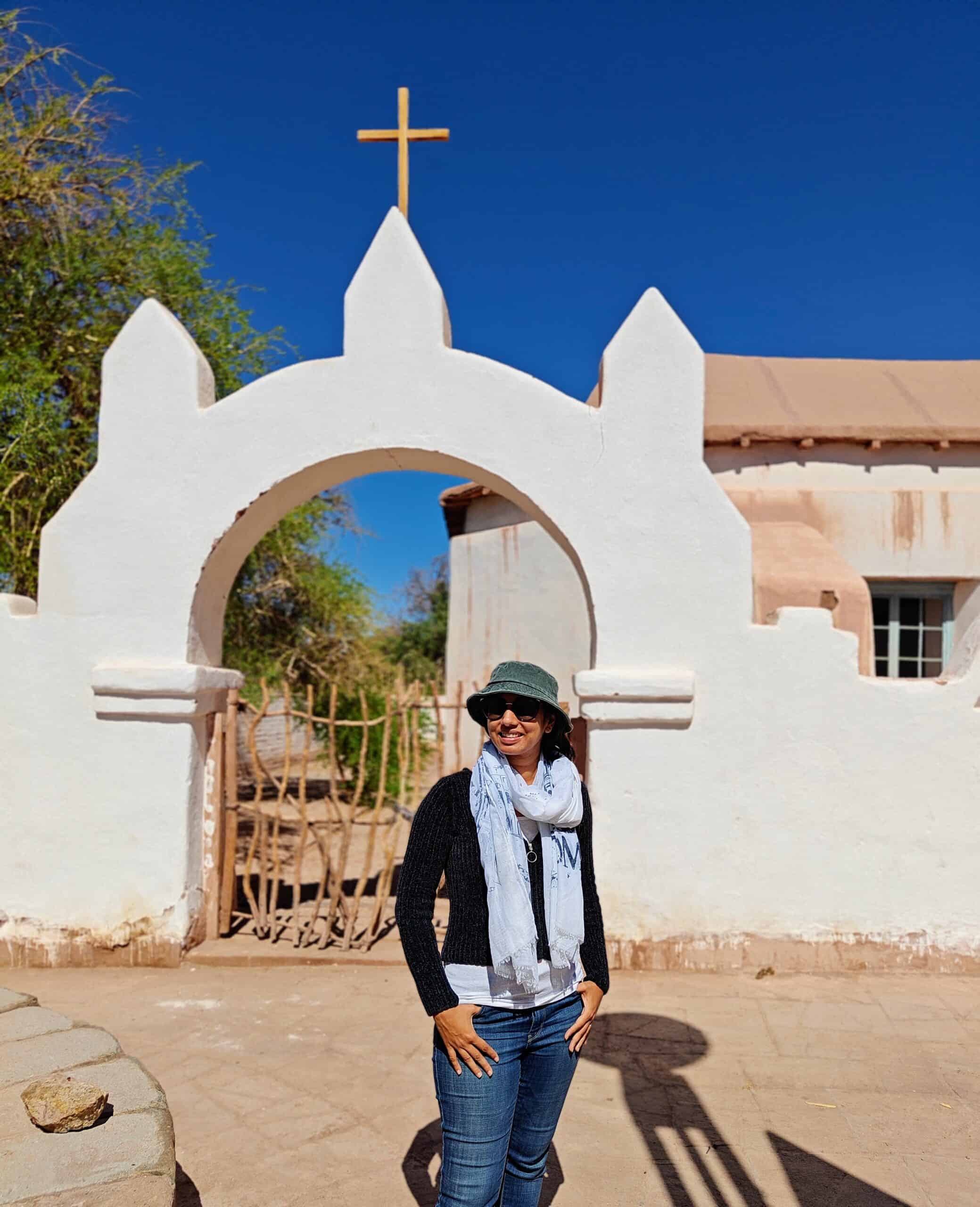
Where to Stay in San Pedro
If you’re looking for a mix of comfort and local charm, book a room at Hotel Jardin Atacama, which features fast internet and a peaceful patio and for those mixing work with exploration. We stayed there during our trip as it was budget friendly and their fast wifi really helped me to hop on an urgent work call.
Other great options are:
- Hostal Rural – A fun, budget-friendly stay with a social, backpacker vibe and colorful, boho-style décor.
- Altiplanico Atacama – A boutique hotel with desert-chic design, serene courtyards and sweeping mountain views.
- Tierra Atacama – A stunning luxury lodge that blends modern design with natural elements, offers private excursions, spa treatments and jaw-dropping views of the Licancabur Volcano.
Pro Tip: Avoid places too close to the center plaza if you’re a light sleeper. It can get loud with tour pickups and street noise.
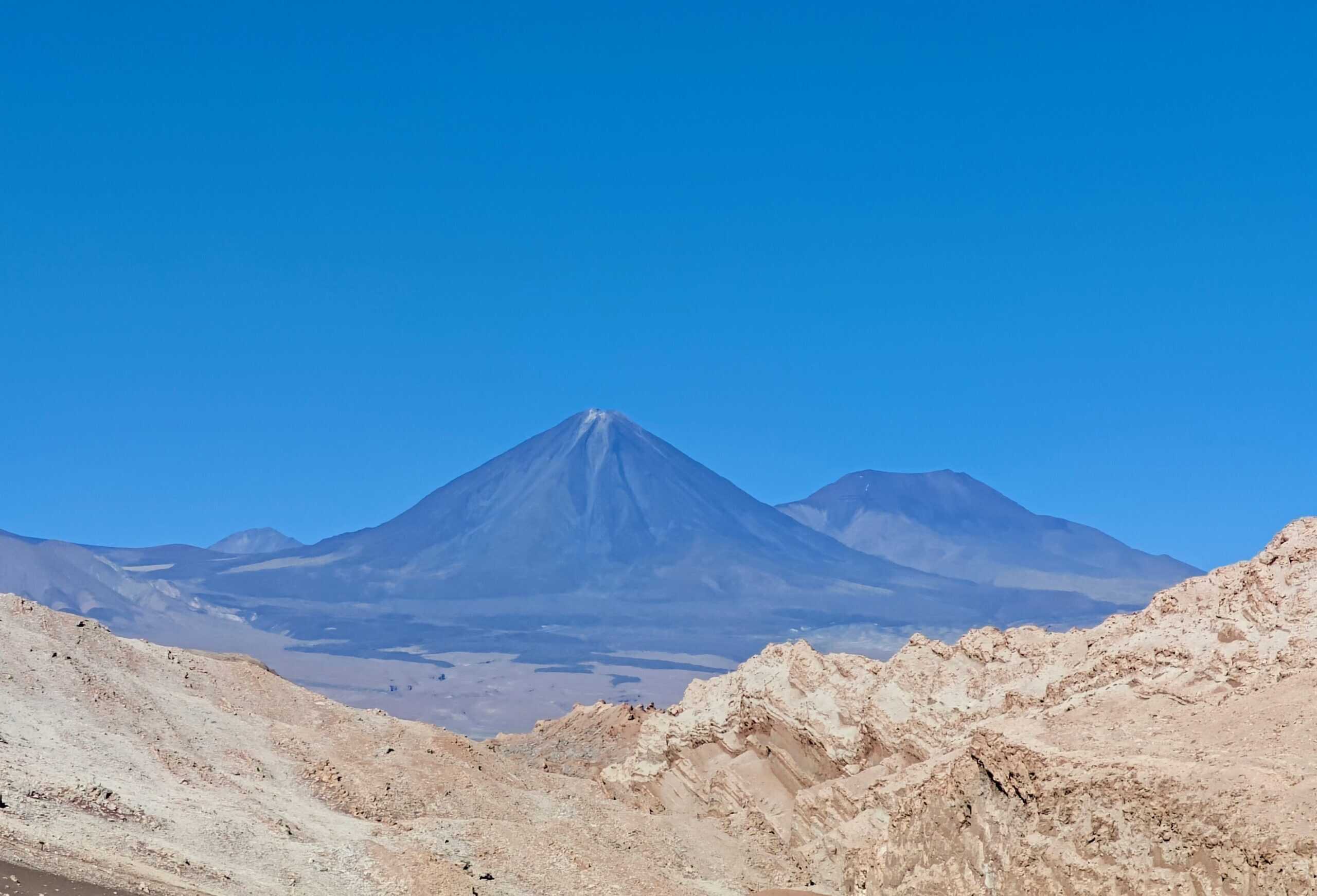
Where to Eat & Drink
Despite its remote setting, San Pedro has a surprisingly good food scene. After dusty day trips, we were always ready to eat well and the town delivered.
- Jardin Meraki – Our favorite spot after a dusty day of exploring. Cozy and chill, with hearty quinoa risottos, creamy veggie pastas, and fresh juices that hit the spot. The open-air patio with hanging lanterns created such a magical vibe at night, and their wood fired veggie pizza was a total winner.
- Karavan Restobar – A relaxed evening vibe with Chilean wine, fusion plates, and courtyard seating under the stars. Great tunes, great service, and the perfect way to wind down. I couldn’t stop raving about the shrimp pil pil, while Shrey was all about their veggie empanadas.
Top Things to Do in the Atacama Desert – Tried & Tested
The Atacama Desert isn’t just a pretty landscape, it’s a full-blown sensory experience. You’ll float in salt lagoons, walk through canyons that look like Mars, and stargaze under skies so clear they’ll ruin you for anywhere else. These are the top things to do in the Atacama Desert, based on our unforgettable 4-day trip.
Stargazing in the Atacama Desert
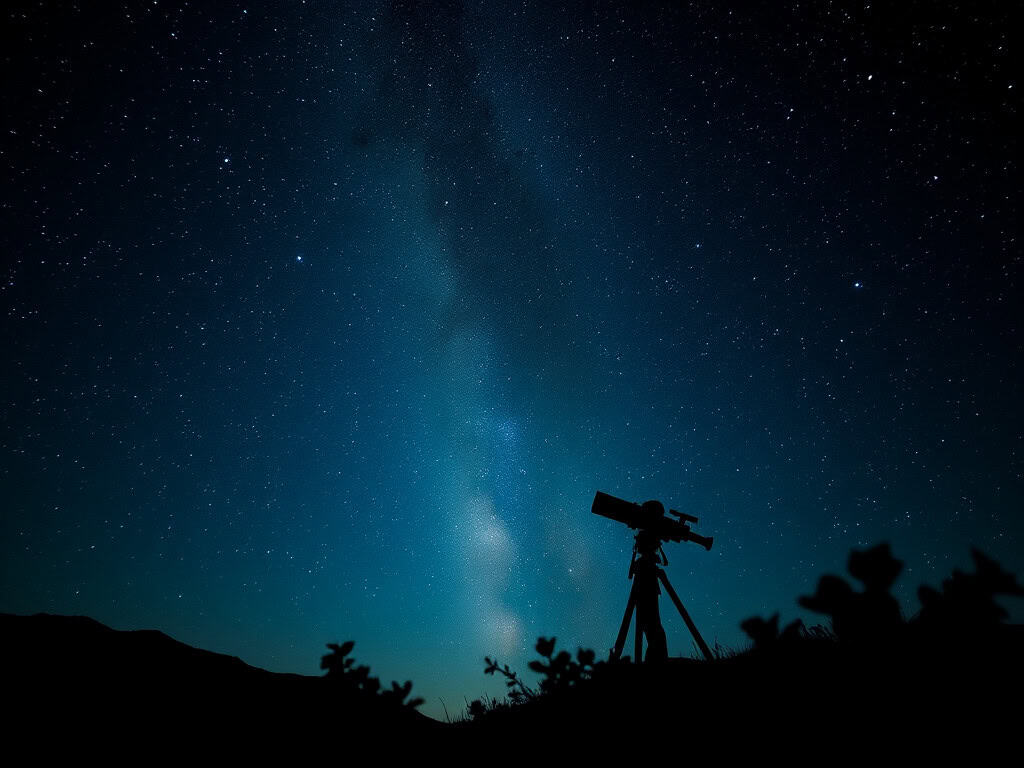
If you do just one thing in Atacama, make it this. With virtually zero light pollution, dry air and high elevation, the Atacama is one of the best places in the world for stargazing and the skies truly live up to the hype.
We timed our visit around the new moon to get the clearest skies. Lying back on desert sand, we spotted the Southern Cross, Saturn’s rings even the Magellanic Clouds that you can’t see from the Northern Hemisphere. We’ve stargazed in Death Valley and the Rockies in the US, but nothing came close to this.
You can DIY it with a blanket just outside town, or book a guided stargazing tour. Some tours come with high-powered telescopes and expert guides, though a few overdo it on snacks and photo ops. Still, if you’ve never seen the Milky Way that clearly with the naked eye, it’s a surreal, unforgettable moment.
Pro Tip: Avoid full moon weeks and pack layers – it gets icy cold at night even in summer.
Valle de la Luna (Valley of the Moon)
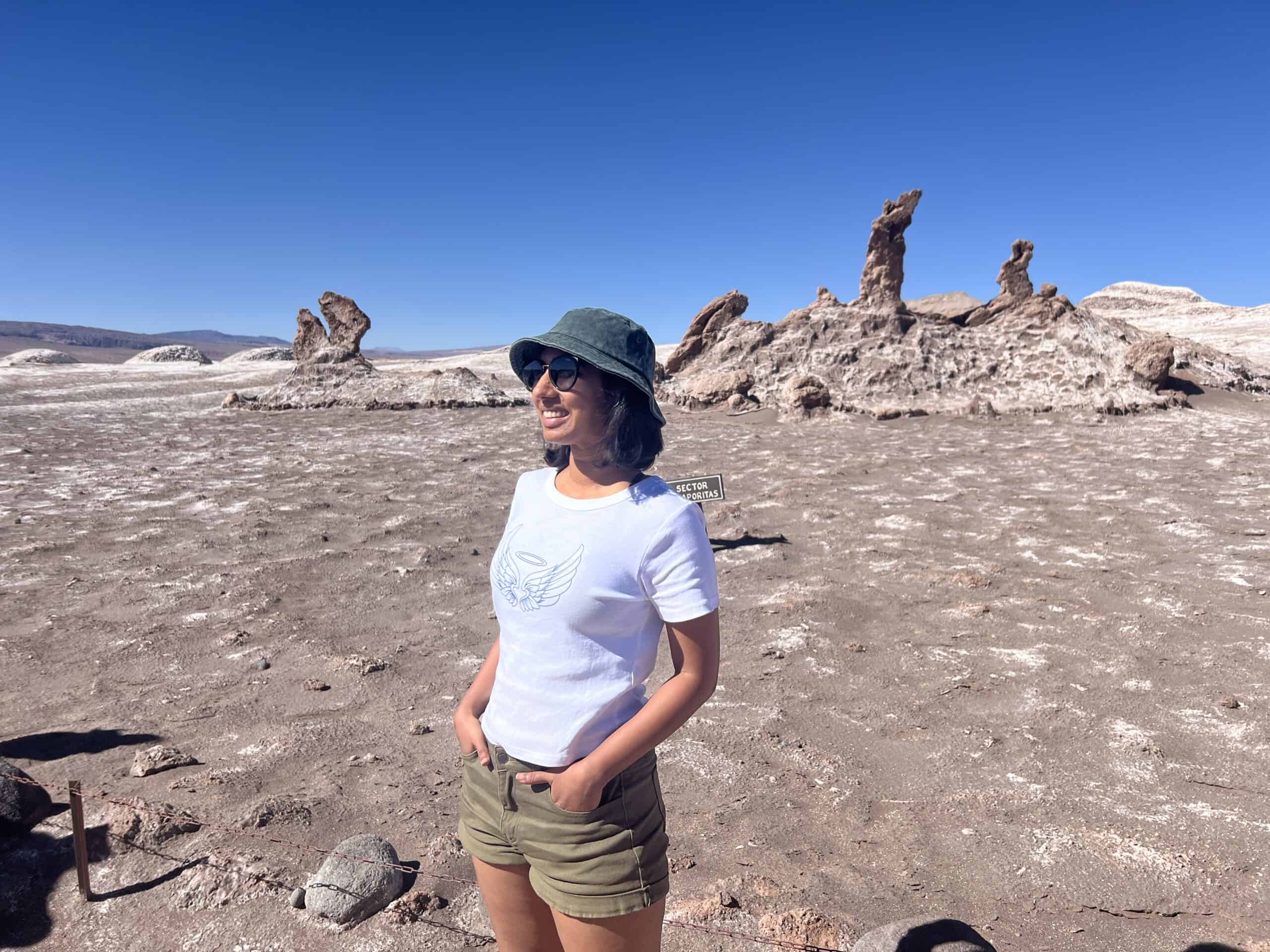

It’s called the Valley of the Moon for a reason because walking through it feels like stepping onto another planet. Picture jagged red canyons, salt-streaked rocks, and giant dunes sculpted by wind over millennia.
The highlight is the Duna Mayor trail, where you climb a massive dune for panoramic views of the valley below. We did this hike just before sunset, and watching the rocks shift from gold to pink to deep purple was easily one of the most beautiful things we’ve ever seen.
Other must-sees include:
- Las Tres Marías – three wind-carved stone formations that seem to reach skyward
- Quebrada de Ckari – a lesser-known viewpoint with sweeping desert vistas
Entrance Fee: $12 USD
When to Go: Late afternoon for the sunset show
Must-Have: Sunglasses, hat, sunscreen, water and a camera
Sunrise at El Tatio Geysers
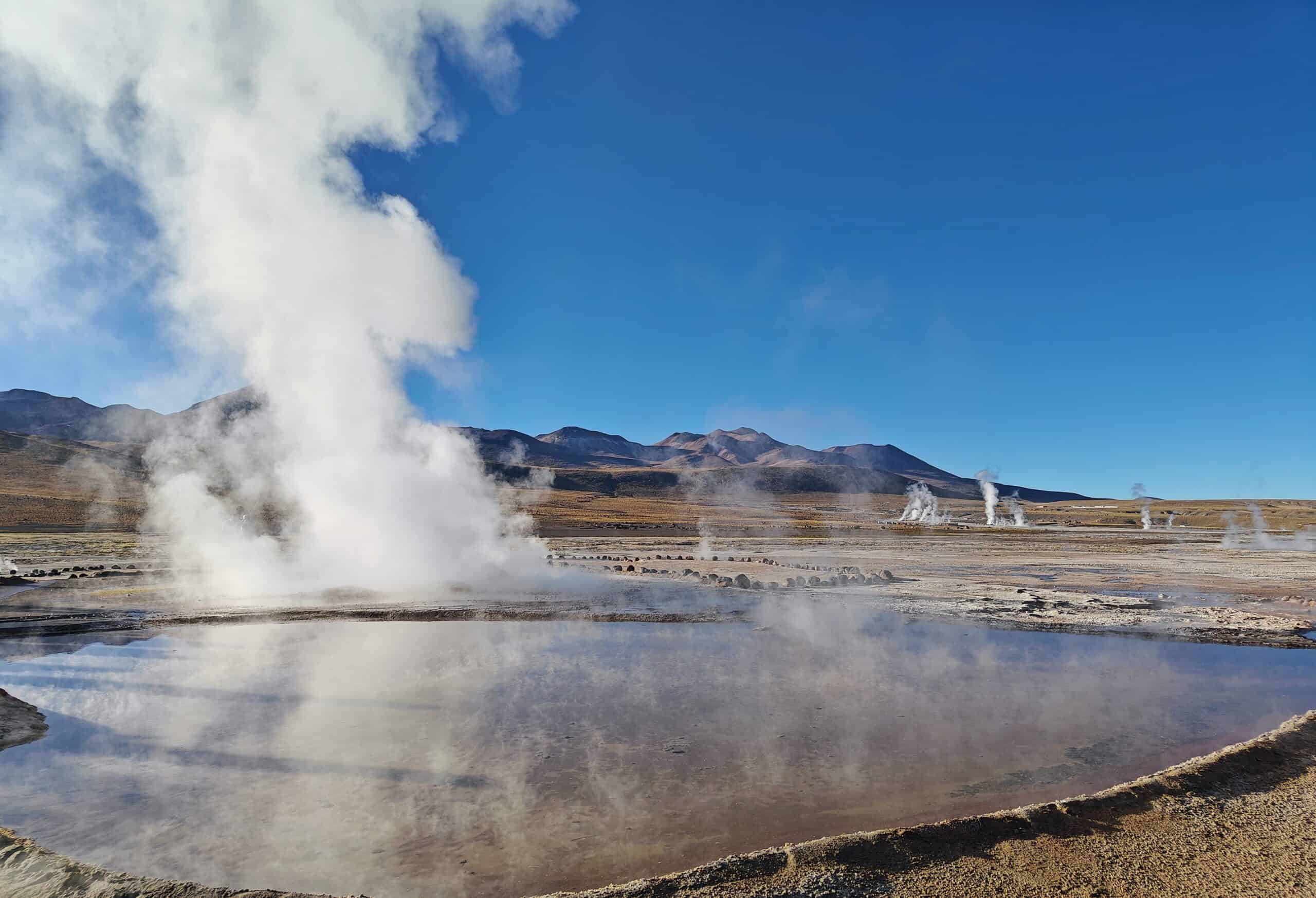
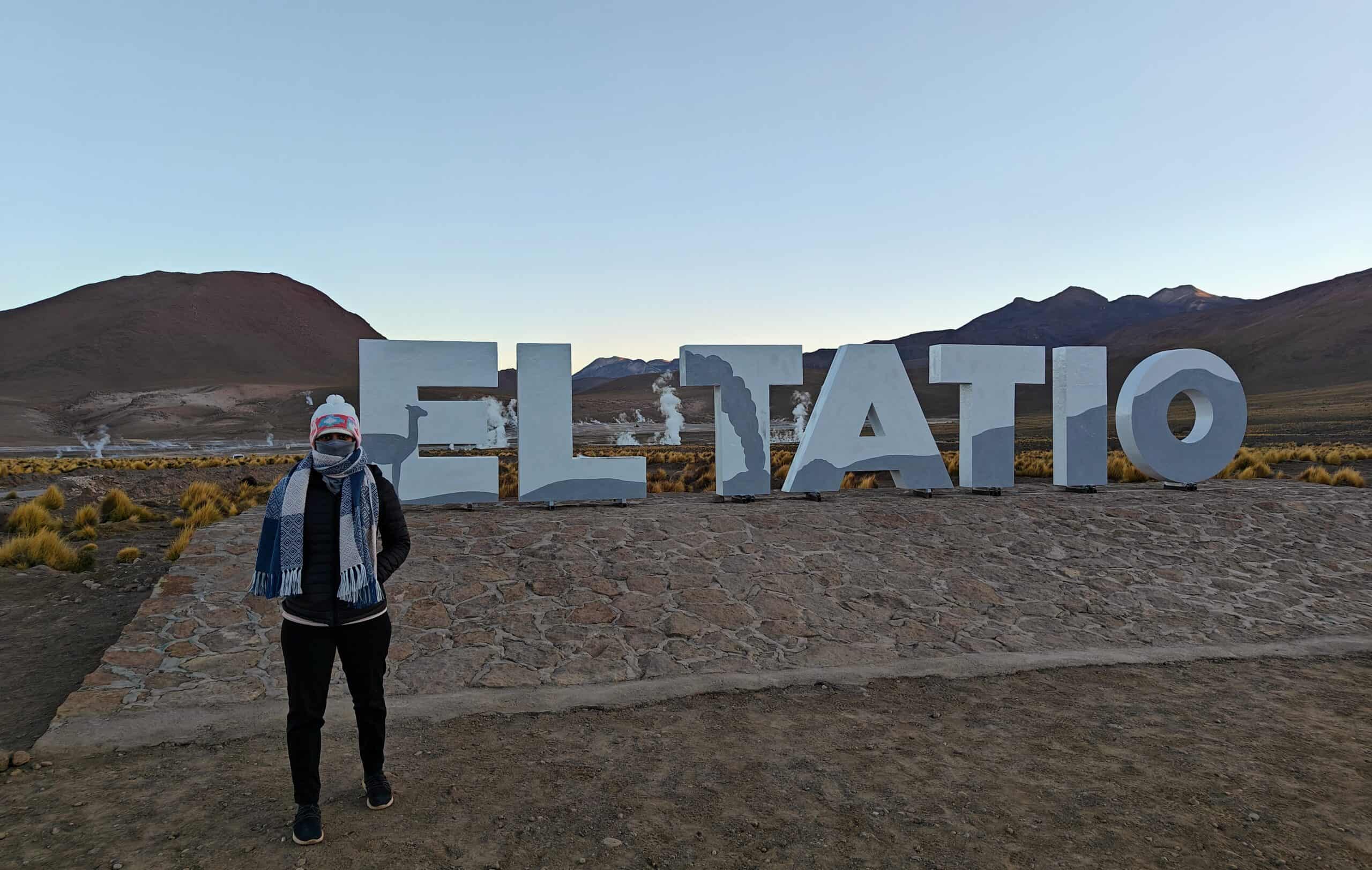
Yes, the 4:30 AM wakeup call hurts but it’s worth it. Located over 4,200 meters (13,800 ft) above sea level, El Tatio is one of the highest geyser fields on Earth, and the sunrise performance here is absolutely wild. Picture nearly 80 geysers erupting steam in the golden morning light, surrounded by snow-dusted peaks. You’ll walk along wooden paths as steam hisses up around you and boiling mud gurgles underfoot. It smells like sulfur, looks like Mars, and feels like walking through a portal.
We went with a small group tour that provided breakfast on-site (hot tea and bread never tasted so good). It was around -10°C early morning, and I was bundled up in four layers just to stay warm. But as the sun slowly rose over the geysers, I found myself peeling off a couple of layers to stay comfortable in the warming desert air.
Tour Cost: $50 USD
What to Pack: Multiple layers, gloves, beanie and water bottle
Important: This is high altitude so go slow and hydrate the day before
Float in Cejar Lagoon & Explore 7 Baltinache Lagoons
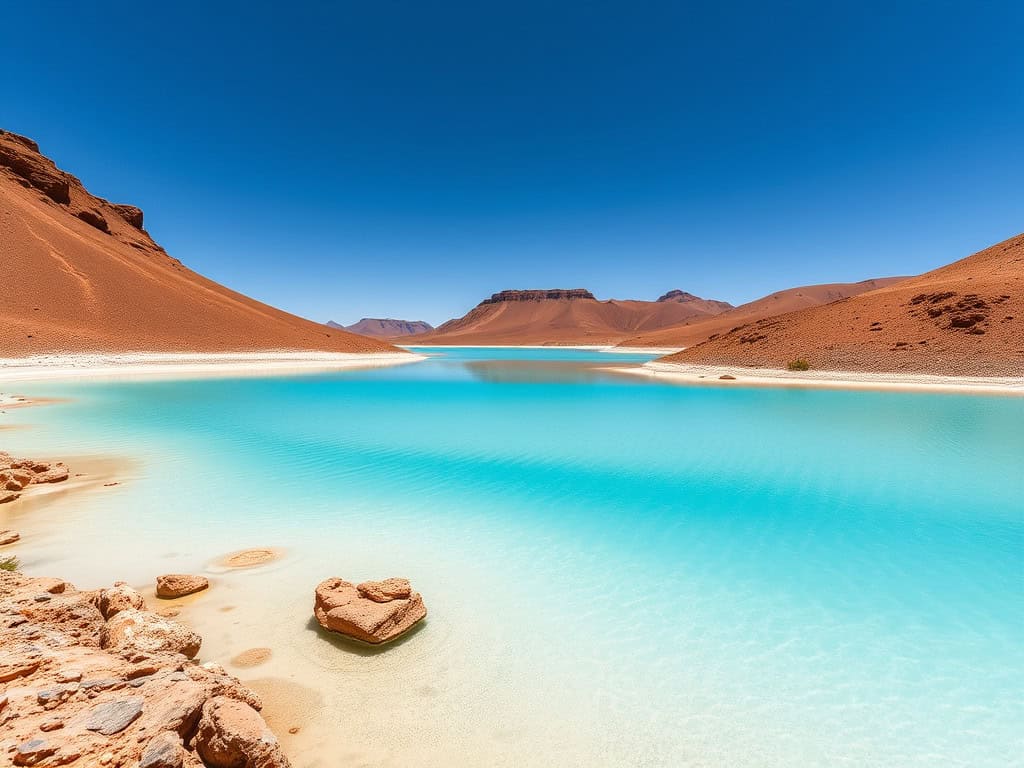
This was one of the weirdest and most fun things we did – floating effortlessly in the middle of the desert. Thanks to its ultra-high salt concentration, Cejar Lagoon gives you that Dead Sea sensation: no effort, no sinking, just bobbing like a cork while staring up at the Andes.
The experience lasts about 20 minutes before your skin starts feeling like it’s been salt-cured, but it’s absolutely worth it. Most tours also include a stop at Ojos del Salar, two circular freshwater sinkholes where you can rinse off and refresh.
The Lagoons of Baltinache is a cluster of 7 bright turquoise saltwater pools surrounded by white salt crusts. These feel like a secret spot, especially with fewer crowds and surreal photo ops. Swimming here is usually prohibited to protect the fragile ecosystem, but the scenery alone is breathtaking.
Cejar Entry: $18 USD
Baltinache Entry: $6 USD
Getting There: Both are about an hour from San Pedro, with Baltinache requiring a bumpy, unpaved road
Must-Have: Towel, swimsuit, change of clothes and flip flops (the salt gets everywhere)
Salt Flats at Salar de Atacama
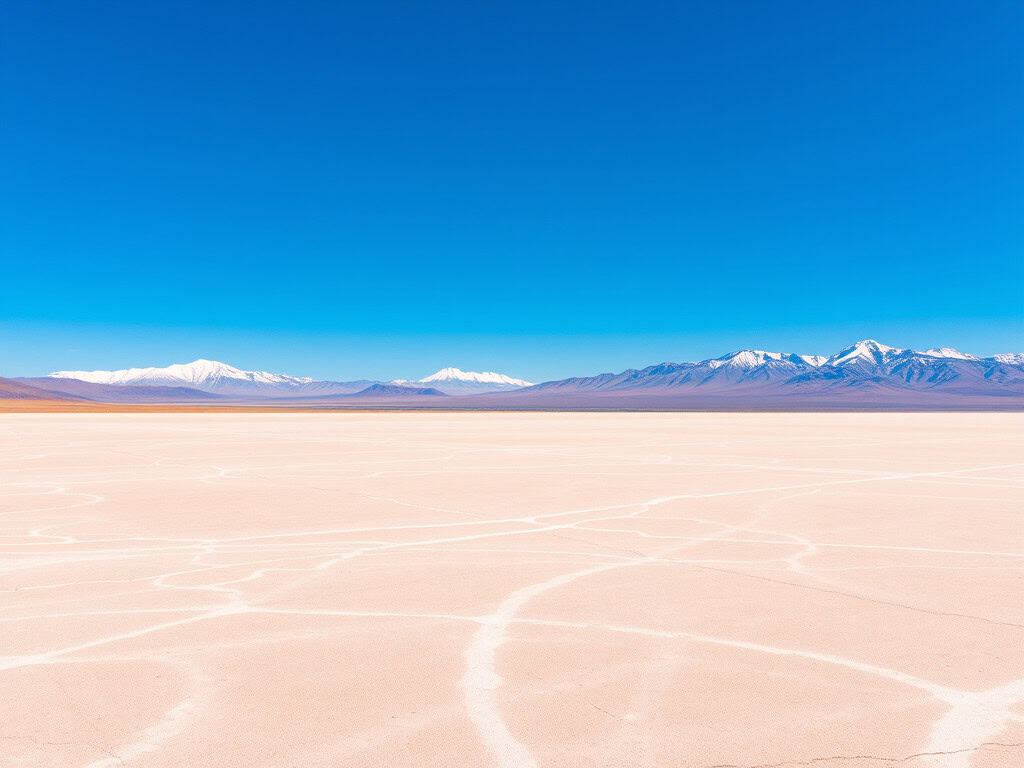
When people think salt flats, they often think of Bolivia but Chile’s Salar de Atacama is a stunner in its own right. The cracked, white terrain stretches for miles and shimmers under the desert sun. It feels alien in the best way.
We visited the Los Flamencos National Reserve, where you can spot Chilean, Andean flamingos feeding in the shallow pools. The sight of bright pink flamingos flying low over blue water with the Andes in the background is a photographer’s dream. There are flat boardwalks for easy walking and signs explaining the importance of preserving this delicate ecosystem.
Best Time to Go: Early morning or sunset for better lighting and fewer people
Must-Have: A zoom lens for capturing flamingos from afar
Tip: It can get windy, so bring a light jacket even during the day
Altiplano Lakes: Miscanti & Miñiques
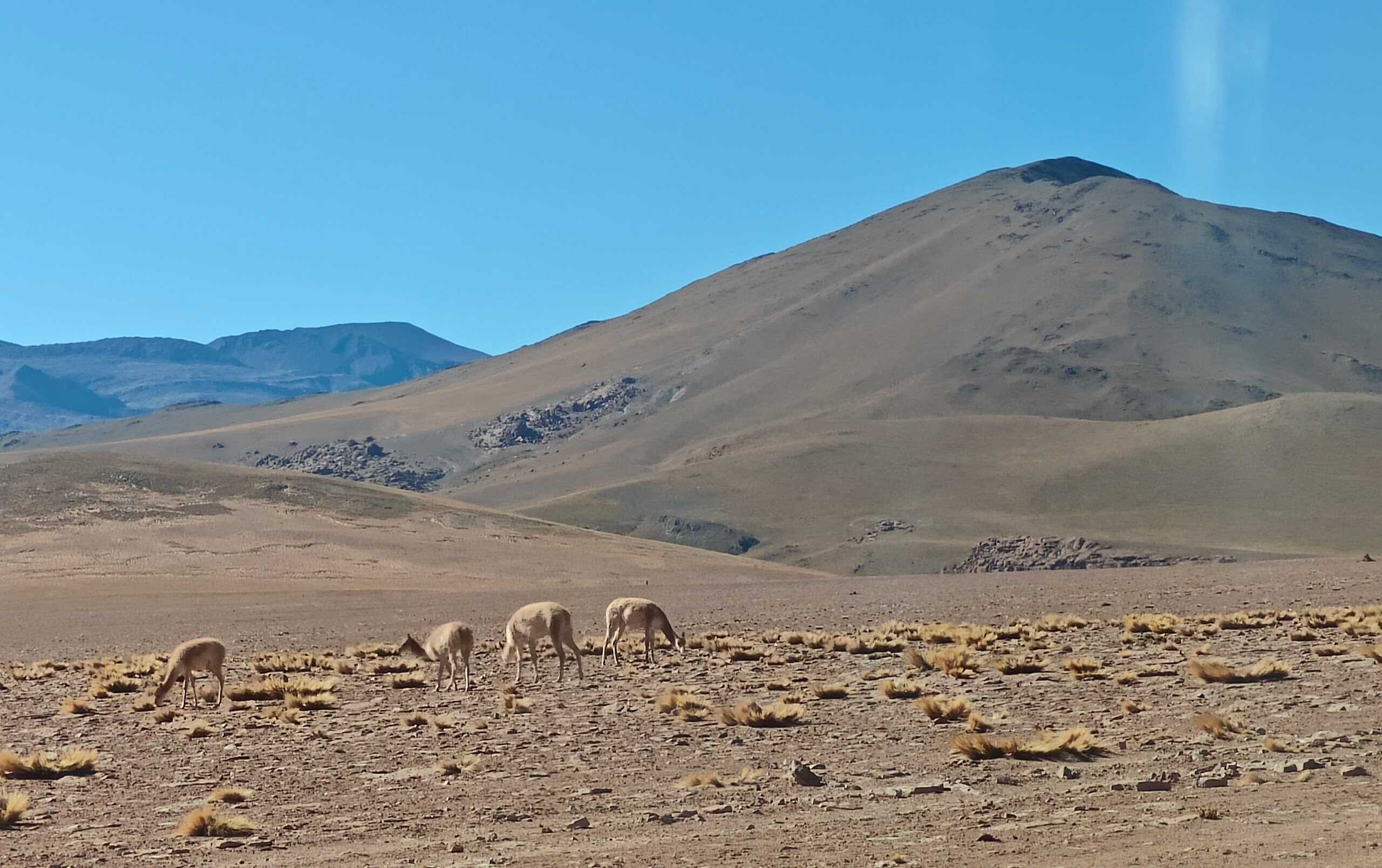
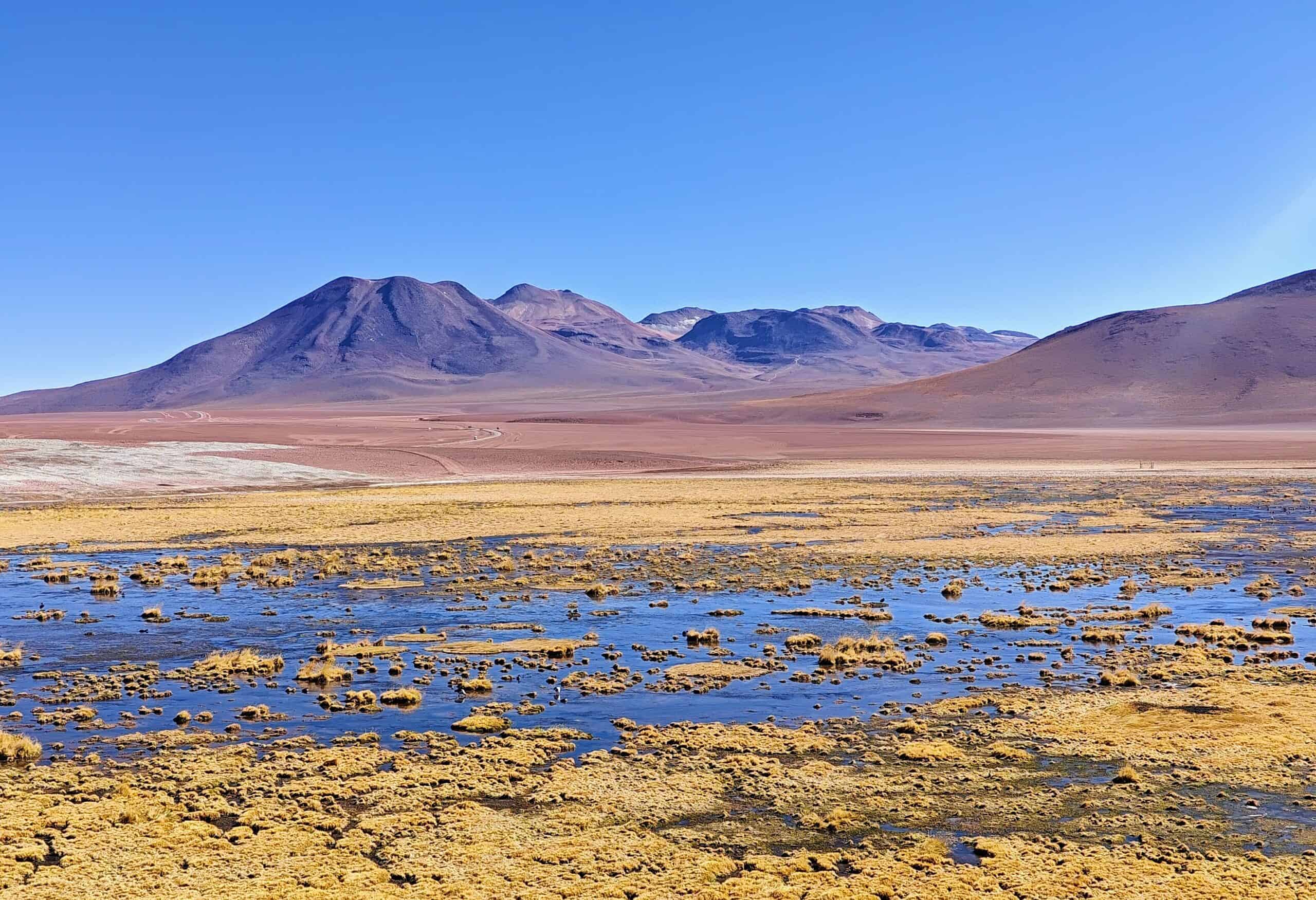
If you’re craving drama, Miscanti and Miñiques deliver. These two high-altitude lakes sit side-by-side at over 4,000 meters (13,000+ feet) and are ringed by snow-capped volcanoes and deep silence.
The lakes themselves are brilliant shades of blue, and the stillness is surreal. You’ll likely spot Andean geese, vicuñas, and other wildlife roaming freely. There are no crowds, no cell signal, and no noise just the wind and the occasional distant bird call.
Entry Fee: $4 USD
Must-Have: Sunscreen, hat, warm layers, snacks and water
Best Paired With: Salar de Atacama or the Piedras Rojas for a full-day high-altitude excursion
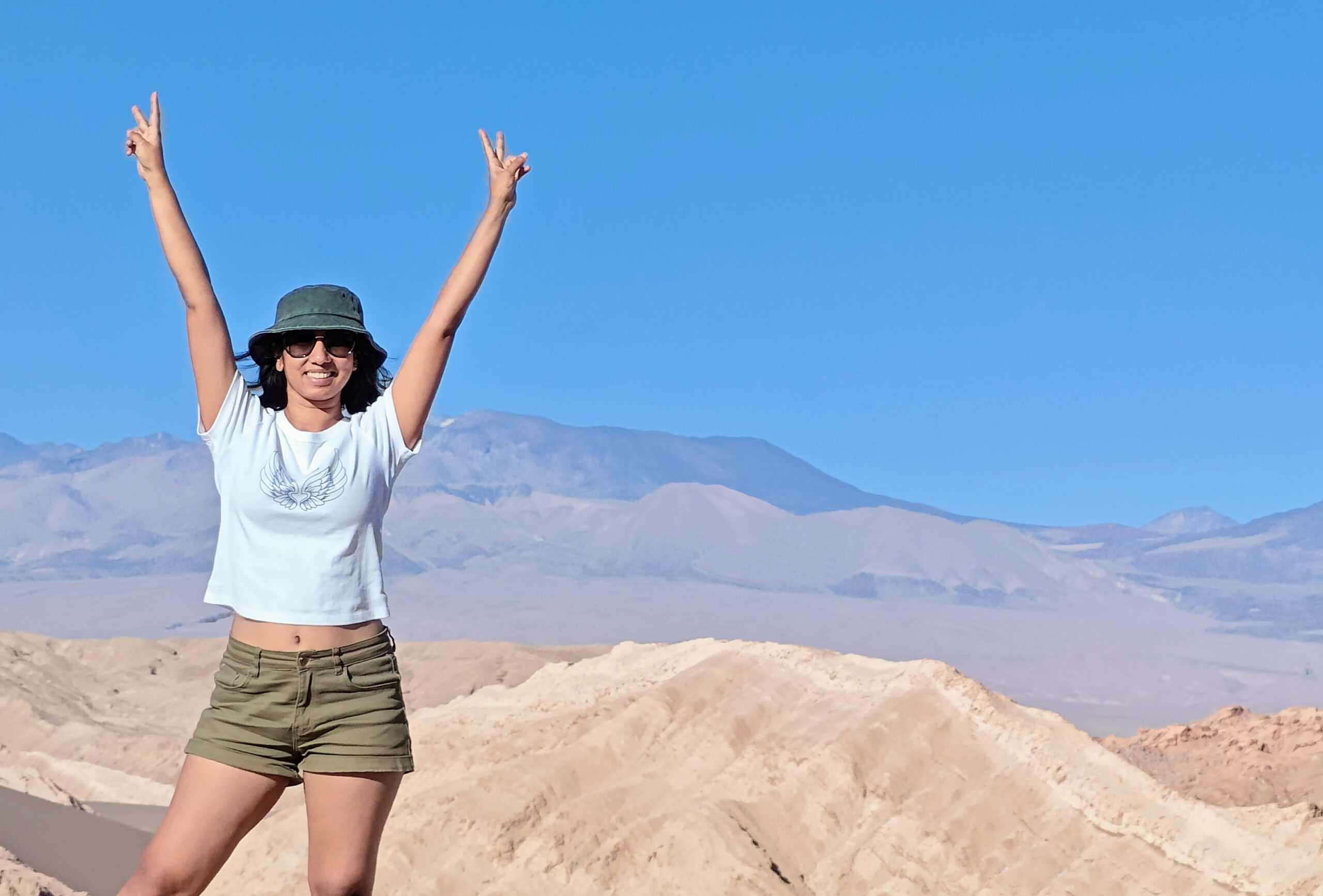
Bonus: Cross into Bolivia for the 3-Day Uyuni Salt Flats Tour
This is the one thing we didn’t do but wish we had. If you have a few extra days, consider booking a 3-day tour from San Pedro de Atacama into Bolivia, ending at the legendary Salar de Uyuni.
The adventure takes you through Red Lagoon, Green Lagoon, Dali Desert, geysers, salt flats, and surreal rock formations – all at dizzying altitudes and in absolute isolation. You’ll sleep in basic guesthouses (sometimes salt hotels), ride in 4x4s across vast landscapes, and take photos that feel like CGI.
We met other travelers who did it and raved about the experience even with the long drives and rough accommodation. If we ever go back, this is the thing we’ll prioritize.
Tour Duration: 3 days / 2 nights
Note: You’ll cross an international border so check visa requirements for Bolivia in advance
Pack: Warm layers, snacks, cash in Bolivianos, and a sense of adventure
Essential Tips for Visiting the Atacama Desert
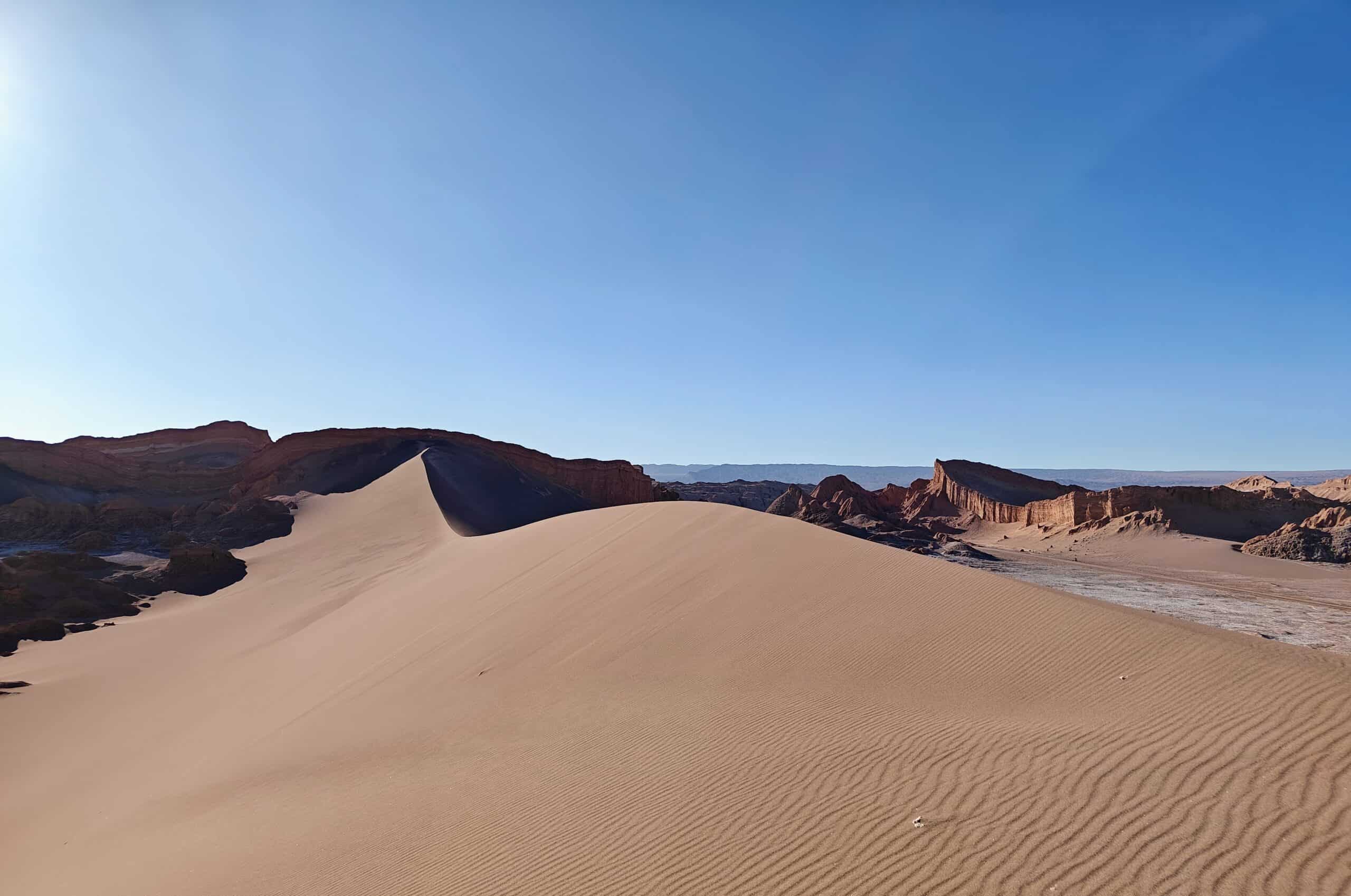
1. Take It Slow with the Altitude
San Pedro sits at about 2,400 meters (7,900 ft) but most excursions go much higher. Spend your first day exploring the town and staying hydrated. Coca tea and coca candies (sold locally) can help with lightheadedness or nausea.
2. Prepare for Wild Temperature Swings
Atacama days are hot and sunny, but nights and mornings are freezing cold, especially at elevation. Layer up with a base layer, fleece, windbreaker, and beanie for early tours. Make sure you carry sunscreen and cap!
3. Hydrate More Than You Think
The air is so dry you barely sweat but that’s deceptive. We carried reusable bottles and drank tons of water (plus electrolytes) to stay ahead of altitude-related dehydration.
4. Respect the Ecosystem
This desert is stunning but fragile. Stick to marked paths, avoid stepping on salt crusts or mineral deposits, and don’t take anything (even salt or stones) with you. And always pack out what you pack in.
5. Bring Cash
While many restaurants and tour companies accept cards, smaller shops, local markets and even some accommodations or transfer services prefer cash. ATMs in San Pedro can run out or charge high fees, so withdraw in Calama if you can.
Why Atacama Stole Our Hearts
There’s something timeless about the Atacama. The silence. The scale. The stars. It was one of those rare places that made us feel small in the best way and gave us space to truly disconnect.
We went in thinking four days would be enough, but honestly, it wasn’t. We could have stayed for two weeks, taking it slow, layering in Bolivia, and revisiting our favorite spots at different times of day. Whether you’re there to shoot stars, float in salty lagoons, or just escape the digital buzz, the Atacama Desert gives you permission to pause. And that’s worth more than any tour or ticket!

